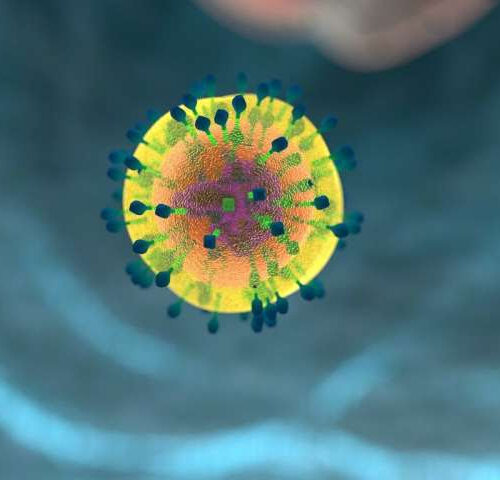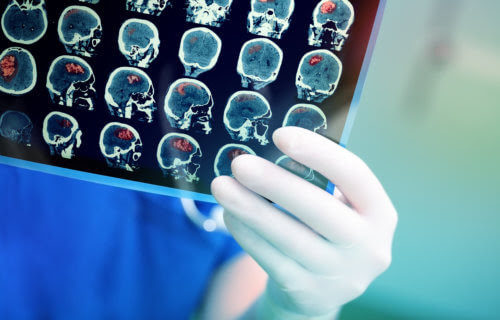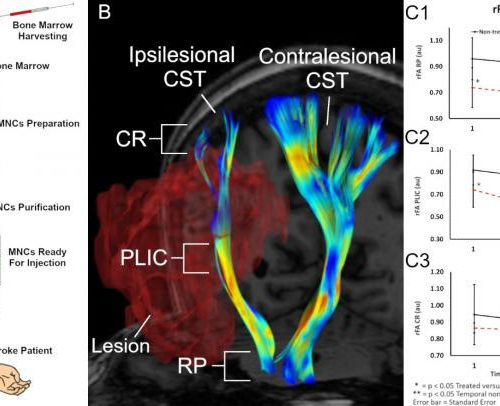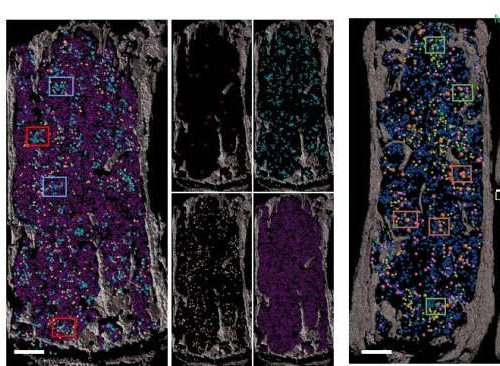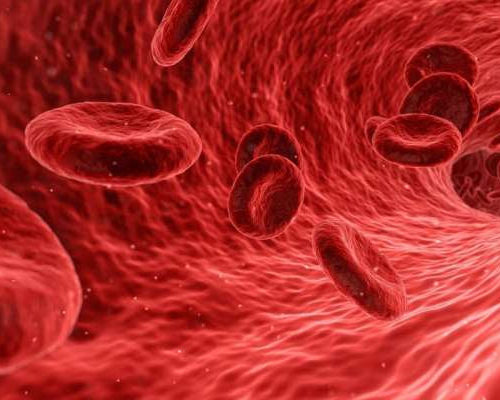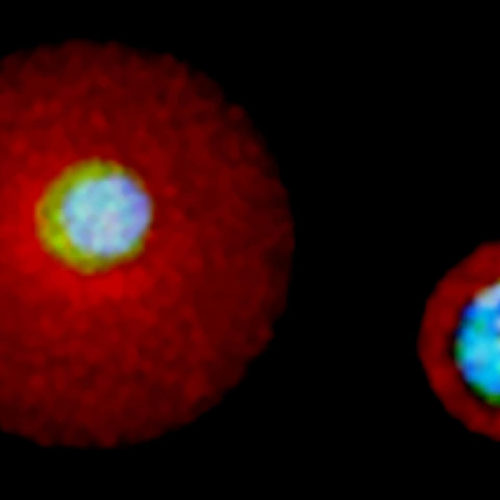by St. Jude Children’s Research Hospital Credit: CC0 Public Domain Scientists at St. Jude Children’s Research Hospital have developed the first GRP78 targeted chimeric antigen receptor (CAR) T cell. Their GRP78 CAR T cell successfully targeted and destroyed acute myelogenous leukemia (AML) cells in the lab. A paper on the work appeared today in Nature Communications....
Tag: <span>Bone marrow</span>
Bone marrow–derived fibrin clot may become a treatment for meniscus injuries
Reviewed by Emily Henderson, B.Sc. Jul 5, 2021 While this isn’t the fountain of youth, scientists may have improved healing in our joints – even in areas that become weaker as we grow older. The meniscus is a durable, yet flexible tissue found in joints like our wrist and knees that helps them absorb shock...
Injecting bone marrow into brain could help stroke patients recover faster, breakthrough study shows
by Study Finds HOUSTON — Injecting bone marrow into the brain could help stroke victims recover, suggests a new study. Results of a clinical trial provide evidence that treating severe stroke patients with an injection of bone marrow cells may lead to a reduction in brain injury. The breakthrough could help reduce the impact from severe...
Study provides evidence that bone marrow cell injections help heal the brain after stroke
ALPHAMED PRESS IMAGE: Autologous bone-marrow mononuclear cells were intravenously administered in patients with acute ischemic stroke as procedure outline in panel A. The non-treated patients were recruited separately. Both groups were imaged 3 time over year and neuroimaging biomarkers were developed. Integrity of the ipsilesional and contralesional cortical spinal tracts (CST) were evaluated via diffusion...
Bone marrow ‘map’ opens path to organoid-like blood stem cell production
by Cincinnati Children’s Hospital Medical Center These maps pinpoint the location of blood progenitors and their differentiating offspring in the mouse bone marrow. This is the first study to image blood production at this level of detail, say experts at Cincinnati Children’s. Findings were published Feb 10, 2021, in Nature. Credit: Cincinnati Children’s Imagine a day when...
A new strategy for making blood stem cells healthier
by Albert Einstein College of Medicine Credit: CC0 Public Domain The hematopoietic (blood-forming) stem cells (HSCs) residing in our bone marrow produce all of our blood cells, including key immune cells that protect us from bacteria and viruses. As we age, our HSCs become less efficient and less able to make healthy new blood cells. In...
Coaxing single stem cells into specialized cells
UNIVERSITY OF ILLINOIS AT CHICAGO SINGLE CELLS ENCAPSULATED IN HYDROGEL WITH VARIED DEPOSITION USING A NEW TECHNIQUE DEVELOPED AT UIC. Researchers at the University of Illinois Chicago have developed a unique method for precisely controlling the deposition of hydrogel, which is made of water-soluble polymers commonly used to support cells in experiments or for therapeutic...
Researchers discover critical process for how breast cancer spreads in bones
Once breast cancer spreads to bone, treatment becomes nearly impossible. Breast cancer cells can lie dormant in the bone, often undetectable and able to escape typical treatments. Unfortunately, these dormant cells can awaken at any time to generate tumors. All of this combined makes it difficult to understand how the cells proliferate and how to...
How the heart sends an SOS signal to bone marrow cells after a heart attack
Human cells shed exosomes. These tiny extracellular, membrane-bound vesicles can carry cargo for cell-to-cell communication, ferrying diverse loads of proteins, lipids or nucleic acids. University of Alabama at Birmingham and Chinese researchers now report that exosomes are key to the SOS signal that the heart muscle sends out after a heart attack. After the heart attack, the exosomes in the bloodstream carry greatly increased amounts of heart-specific microRNAs—an observation seen in both mice...
Removing barriers to healing
Severe inflammation caused by a patient’s immune system can be deadly, but stem cells found in human fat could provide new ways to protect against this toxic reaction. Fat has a higher ratio of stem cells than other tissues such as bone marrow. Credit: Robert M. Hunt, licensed under CC BY 3.0 (image was cropped,...

